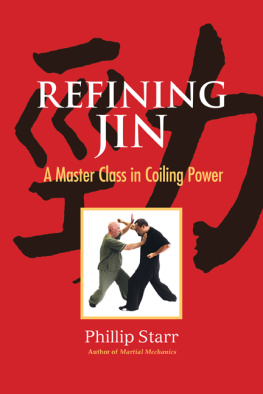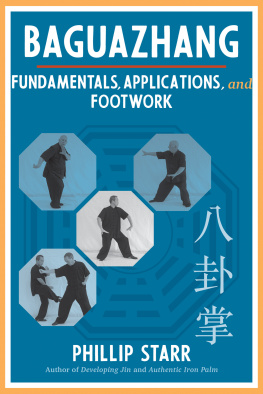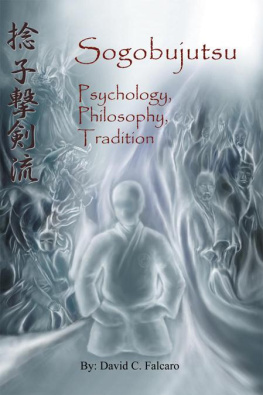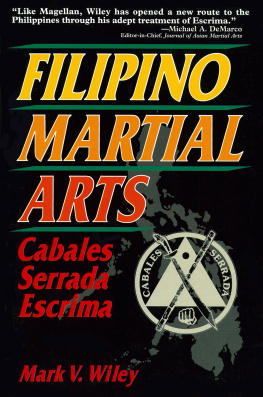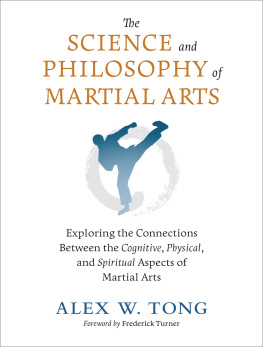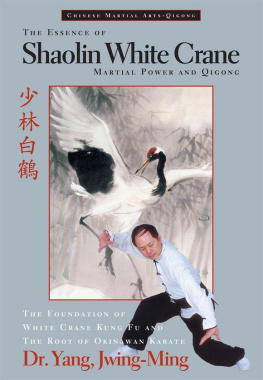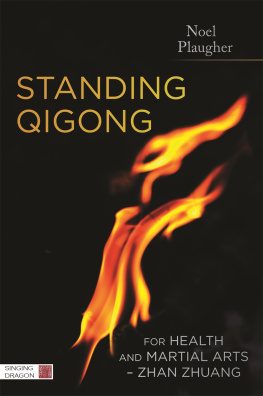
Copyright 2021 by Phillip Starr. All rights reserved. No portion of this book, except for brief review, may be reproduced, stored in a retrieval system, or transmitted in any form or by any meanselectronic, mechanical, photocopying, recording, or otherwisewithout written permission of the publisher. For information contact Blue Snake Books c/o North Atlantic Books.
Published by Blue Snake Books, an imprint of North Atlantic Books
Berkeley, California
Cover photos by Phillip Starr
Cover design by John Barnett
Book design by Happenstance Type-O-Rama
Martial Arts and the Mirror Image: Improve Your Form, Build Strength, and Increase Flexibility with Psychology and Qigong Principles is sponsored and published by North Atlantic Books, an educational nonprofit based in Berkeley, California, that collaborates with partners to develop cross-cultural perspectives, nurture holistic views of art, science, the humanities, and healing, and seed personal and global transformation by publishing work on the relationship of body, spirit, and nature.
North Atlantic Books publications are distributed to the US trade and internationally by Penguin Random House Publishers Services. For further information, visit our website at www.northatlanticbooks.com and www.bluesnakebooks.com.
PLEASE NOTE: The creators and publishers of this book disclaim any liabilities for loss in connection with following any of the practices, exercises, and advice contained herein. To reduce the chance of injury or any other harm, the reader should consult a professional before undertaking this or any other martial arts, movement, meditative arts, health, or exercise program. The instructions and advice printed in this book are not in any way intended as a substitute for medical, mental, or emotional counseling with a licensed physician or healthcare provider.
Library of Congress Cataloging-in-Publication Data
Names: Starr, Phillip, author.
Title: Martial arts and the mirror image : using martial arts and qigong
principles to reinvent yourself and achieve success / Phillip Starr.
Description: First Edition. | Berkeley, California : North Atlantic Books,
2021. | Includes bibliographical references. | Description based on print
version record and CIP data provided by publisher; resource not viewed.
Identifiers: LCCN 2021012324 (print) | LCCN 2021012325 (ebook) | ISBN
9781623176457 (ebook) | ISBN 9781623176440 (trade paperback) | ISBN
9781623176440 q(trade paperback) | ISBN 9781623176457 q(ebook)
Subjects: LCSH: Mind and body. | Martial arts. | Qi gong.
Classification: LCC BF151 (ebook) | LCC BF151 .S73 2021 (print) | DDC
158.1dc23
LC record available at https://lccn.loc.gov/2021012324
LC record available at https://lccn.loc.gov/2021012325
To my teacher, Master W. C. Chen, who taught me more than he ever imagined
Preface
I have been a martial arts teacher for most of my life. For more than sixty years I have studied the old, traditional martial ways of both China and Japan, and I have been involved in teaching these disciplines for over fifty years. Some time ago, I realized that I could read students and prospective students simply by studying the way they held themselves and moved. I had always known and believed the ancient principle that body and mind are inseparably united, but I had never really noticed how clearly that principle could be observed. Moreover, I realized that the behaviors, and consequently the self-image, of many students improved following certain types of rigorous training that was aimed at correcting errors in posture, movement, and body alignment. Although the principles of proper body alignment and movement that I teach are based on old traditional martial arts exercises and concepts, I saw that virtually anyoneincluding people who had absolutely no interest in practicing conventional martial disciplinescould derive benefit from them.
It was then that my mind was opened to an epiphany. I saw that trying to change the mind without first training and changing the body is essentially pointless. The body is a reflection, an outward expression of the mind. It stands and moves in accordance with how the mind stands and moves. Once certain forms of standing and moving become ingrained in the body, they reinforce and maintain the same feeling in the mind. Body and mind essentially act as two mirrors that face each other.
The mind is pliable and abstract. One cannot actually see that it has been changed by anything presented to it. On the other hand, the body is easily observable, and we have no difficulty in seeing how it is affected by various stimuli. Being a strong believer in the concept of self-image psychology, I discerned how the body readily expresses ones self-image. The importance of the self-image cannot be understated. It is, in fact, the foundation upon which our personalities and futures stand. I saw that people with a positive self-image always moved and stood in much the same way, while those who suffered from a negative self-image moved and held themselves in very different ways.
Presently, there are numerous self-help courses available to the public at large. However, the vast majority of participants in these courses derive very little, if any, benefit from them, and I realized why: it is because of the way in which they stand and move. Virtually all self-help courses direct almost all of their instruction and training at the mind, which, as noted earlier, is a plastic, abstract thing. But because the body is left out of the instruction, it derives no benefit from it and continues to maintain the same posture and forms of movement to which it has become accustomed.
And remember: the body reinforces and affects the thinking of the mind. If it returns to its old habitual ways of standing and moving, so does the mind. Intellectual understanding is not enough. Both mind and body, because they are a single entity, must be trained. The key, of course, lies in knowing exactly what the correct forms of posture and movement are, and how to teach them.
The fundamental theory of the Mirror Image Technique is that the mind can be influenced by training the body. Moreover, because students can physically see and feel the changes made to the body through the application of certain principles, it is much easier for them to understand how these same principles affect the mind. We change the mind by first changing the body. We learn and change from the outside inward. The forms of standing and moving are natural and can be learned by anyone in a relatively short time, regardless of age or gender or ability.
Acknowledgments
I owe a debt of gratitude to Shawn Steiner, owner of Steiners Martial Arts Academy, for allowing me to use his facility for taking the photographs, and Hiro Misawa, Jim OConnell, and his son, Jim Jimmy OConnell, for kindly assisting with the photos.
Basic Principles of the Mirror Image Concept
Body and mind are inseparably united.
This is an oft-repeated aphorism of numerous Eastern disciplines, from martial arts to the traditional tea ceremony, brush calligraphy, and kabuki. But all too often it is simply glossed over in the West, especially by martial arts practitioners of senior grade as well as instructors. Generally, it is used to express the belief that whatever affects the body also affects the mind, and vice versa. We can observe changes in the body without much difficulty. However, the mind, per se, cannot be seen, although it can certainly make its presence known readily enough. And because we cannot see the mind, we tend to think of it as being disassociated from our bodies. When we hear truisms such as Body and mind are inseparably united, we often agree with them, but we give no real thought to what they necessarily imply. We may think of mind as being akin to ones feelings or willpower, and although we may agree with the above axiom, we usually tend to brush it aside and think that it seems easy enough to understand. Then we forget about it and fail to apply it to our lives. This is where the Mirror Image Concept comes into play.
Next page


